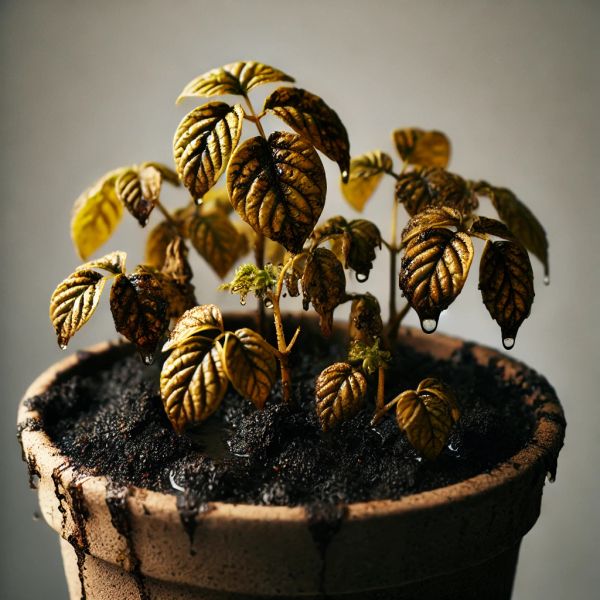Why Are My Plant's Leaves Turning Yellow? Common Causes & How to Fix Them
Discover the top reasons behind yellowing leaves, from watering issues to nutrient deficiencies, and learn how to bring your plant back to health.
Yellowing leaves, also known as chlorosis, can be a sign of various underlying problems with your plant. It's important to identify the root cause to take the right action and restore your plant's health.

Disclosure: This content includes affiliate links, which means we may earn a commission if you click on a link and make a purchase. As an Amazon Associate, we earn from qualifying purchases. This comes at no extra cost to you and helps offset the cost of running Leafwise. Please read our disclaimer for more info.
Common Causes of Yellowing Leaves
1. Overwatering
Overwatering is one of the most common reasons for yellowing leaves. When a plant's roots are sitting in waterlogged soil, they can't access oxygen, leading to root rot and yellowing foliage.
- Symptoms: Yellowing lower leaves, soft stems, and wet soil.
- How to Diagnose: Check the soil's moisture level by sticking your finger about an inch into the soil. If it feels wet, overwatering might be the cause.
-
How to Fix It:
- Allow the soil to dry out before watering again.
- Ensure that your pot has proper drainage. Consider using a high-quality drainage pot to improve airflow and prevent water retention.
- Remove any severely damaged leaves to promote new growth.
2. Underwatering
On the other end of the spectrum, underwatering can also cause yellowing leaves as the plant struggles to access enough moisture.
- Symptoms: Yellowing, dry, or crispy leaves, particularly at the edges.
- How to Diagnose: Check the soil – if it’s dry and pulling away from the sides of the pot, your plant is likely thirsty.
-
How to Fix It:
- Water the plant thoroughly until water drains from the bottom.
- Establish a consistent watering schedule based on the plant's needs. A moisture meter can be really helpful in maintaining the right hydration level.
3. Nutrient Deficiencies
A lack of essential nutrients, such as nitrogen, can cause leaves to turn yellow. Nitrogen deficiency, in particular, often results in yellowing of older leaves first.
- Symptoms: General yellowing, starting with older leaves.
- How to Diagnose: If yellowing starts from the bottom leaves and progresses upward, a nutrient deficiency is likely.
-
How to Fix It:
- Apply a balanced liquid fertilizer according to the package instructions.
- Avoid over-fertilizing, as this can cause other problems.
4. Pests
Pests like aphids, spider mites, and whiteflies can damage plant leaves, causing yellowing as they feed on the plant's sap.
- Symptoms: Yellowing leaves with visible pests, sticky residue (honeydew), or fine webbing.
- How to Diagnose: Inspect the undersides of leaves for pests or sticky residue.
-
How to Fix It:
- Remove pests manually or use insecticidal soap to effectively rid your plants of critters.
- Isolate the affected plant to prevent the pests from spreading.
6. Environmental Stress
Sudden changes in temperature, humidity, or light exposure can stress plants, leading to yellowing leaves.
- Symptoms: Yellowing leaves, leaf drop, or browning tips.
- How to Diagnose: Consider recent environmental changes (e.g., moving the plant, drafts, or changes in lighting).
-
How to Fix It:
- Keep the plant in a stable environment.
- Avoid placing plants near drafts or direct heat sources.
Preventing Yellowing Leaves
- Water Wisely: Water only when the top inch of soil feels dry.
- Fertilize Regularly: Provide balanced nutrients during the growing season.
- Inspect for Pests: Regularly check for pests and take action if needed.
- Maintain Proper Lighting: Ensure your plant receives appropriate light for its species. Consider using a grow light if natural light is inadequate.
Need More Help?
If you're still unsure about the cause of yellowing leaves, try the Leafwise Plant Health Diagnosis Tool for a personalized assessment based on your plant's symptoms.
